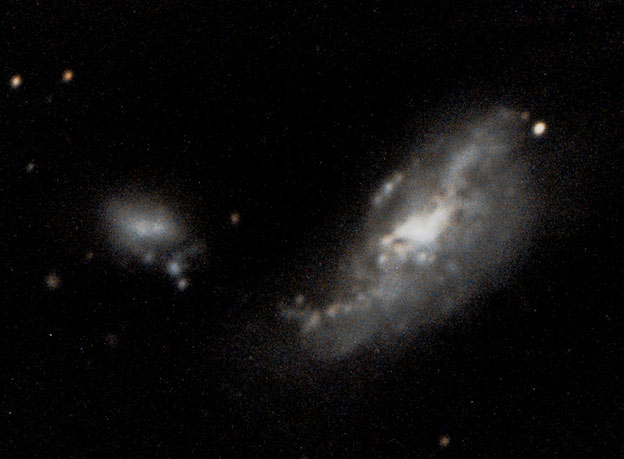Full Moon Cancelled for February
Something you won’t see in February is a full moon! Both January and March have two full moons this year and that leaves February without one! That’s called a Black Moon.
This is Messier 82, the Cigar Galaxy.
It’s a +8 magnitude starburst galaxy that’s 12 million light years away. The “starburst” area is located near the center. It’s an area of intense star formation that was triggered by close interaction with another galaxy. M82’s activity is believed to have been started when it and M81 passed each other 300 million years ago. Astrophysicists believe that M82 is forming new stars 10 times faster than a normal galaxy like ours, the Milky Way.
Both M82 and its bigger, brighter neighbor M81 can be seen on dark nights with the aid of a good pair of binoculars. They appear just to the north and slightly above Dubhe (the bright star in the cup of the Big Dipper!)
If we look on the opposite side of the Big Dipper and a little further out into space, (about 50 million light years), there’s another pair of interacting galaxies, the Cocoon Galaxies (NGC 4485 and NGC4490.)
With a magnitude of +9.33 you need a huge pair of binoculars (15X100) or a telescope to see these galaxies. This is a pair of spiral galaxies that have been distorted by passing too close together. The interaction also turned both into Starburst Galaxies with large areas of star formation.
Other things you can look for February 2018
Jupiter, Mars, and Saturn are all visible in the early morning hours for all of February. Jupiter will start the month rising at 1:20 a.m. It will be followed an hour later by Mars. Saturn will be the late riser of the three appearing on the Eastern horizon at about 4:42 a.m.
Venus will start the month setting shortly after the Sun disappears below the Western horizon. But as the month progresses, Venus will lag behind and become easy to see at sunset.
Moon Phases:
(Gerry Lebing is a retired computer scientist with the U.S. Geological Survey in Washington, D.C. He has visited Hatteras Island since the mid-1970s. He and his wife, Karen, have owned property here for several years and moved to their home in Waves full-time in 2013. Astronomy is a subject that Gerry says he has always been interested in and one that he pursues seriously — he’s built an small observatory next to his house. You can send him questions about the night sky through e-mail, gerry@wmi.org.)



